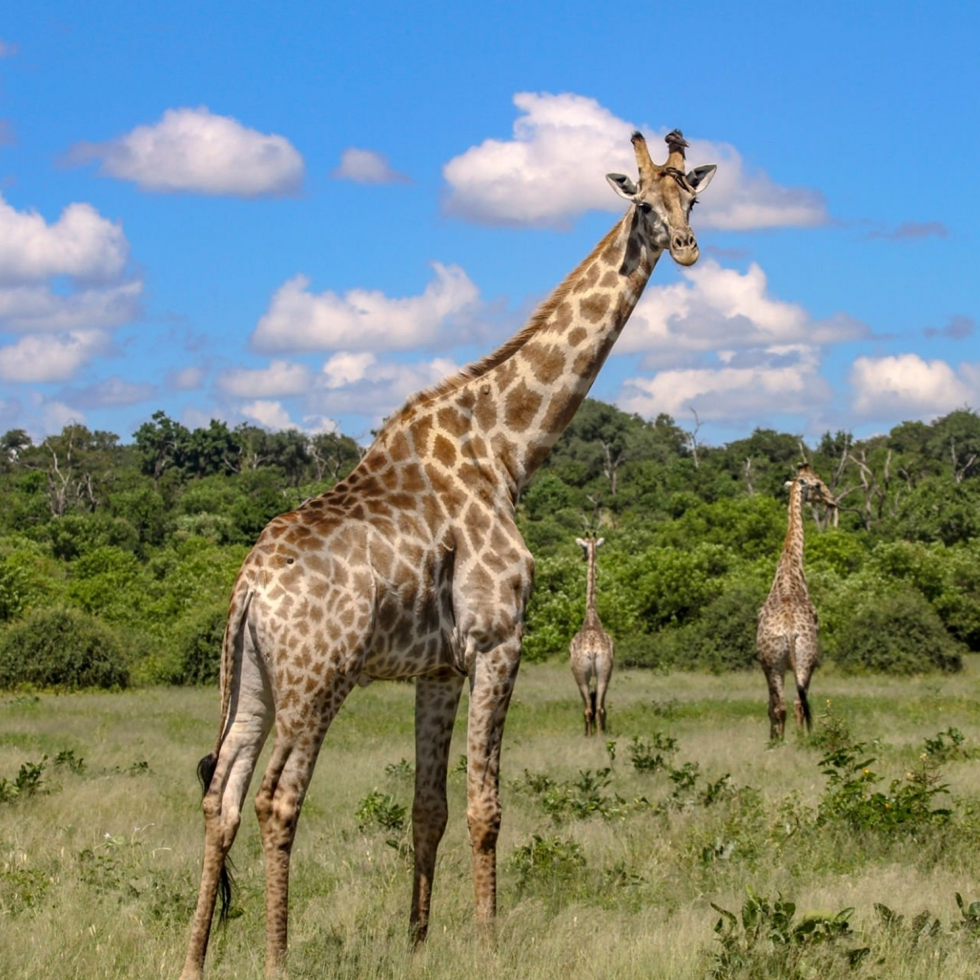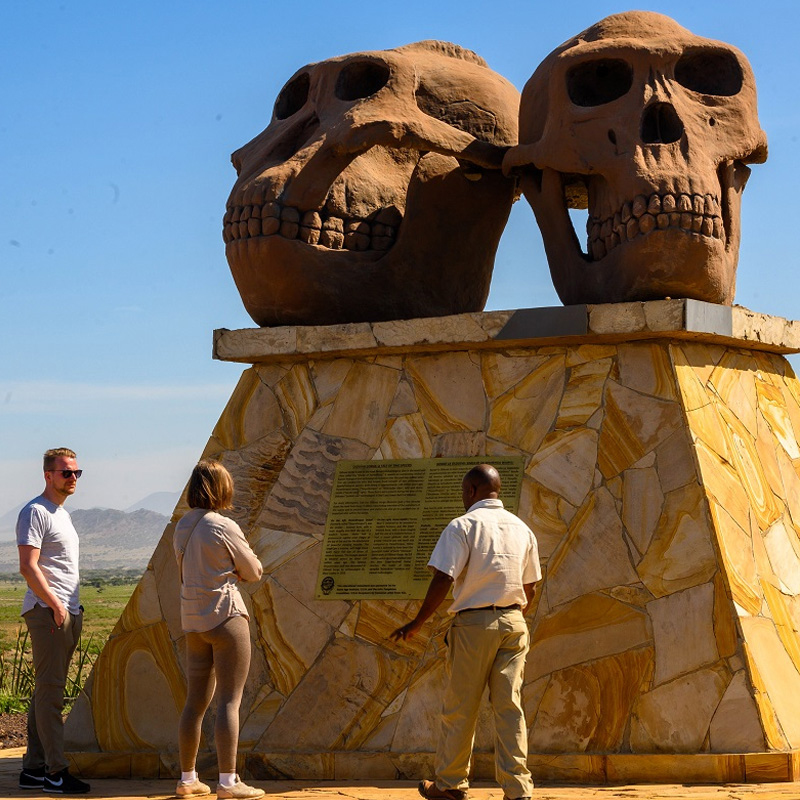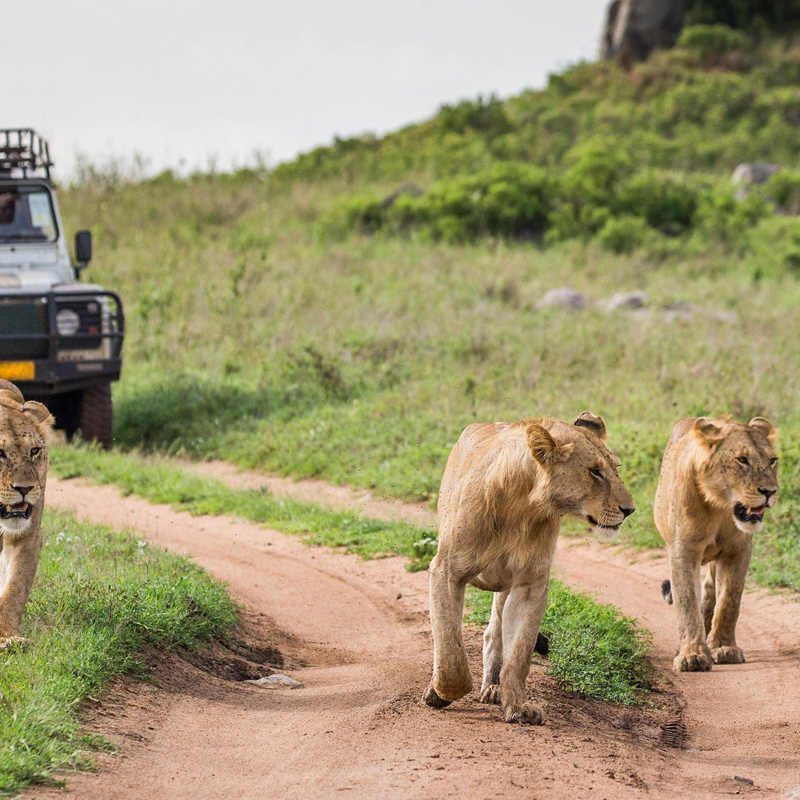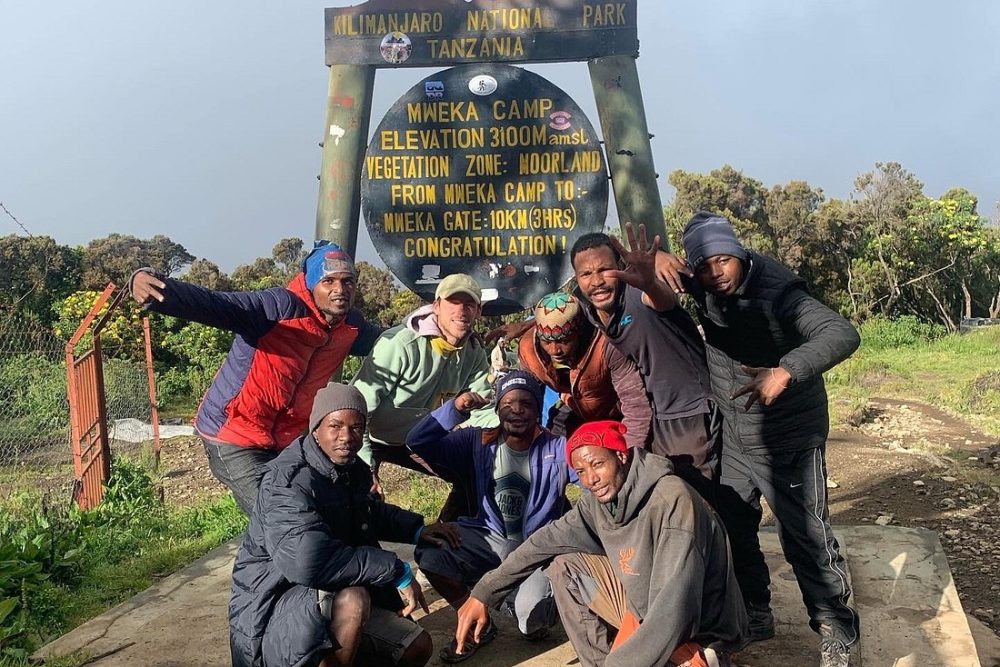Arusha National Park
Arusha is a popular destination for day trip as is the closest Tanzanian National Wildlife Park to both the famous “safari town” of Arusha (29 km) and even from Moshi (65 km) , as well as the Kilimanjaro International Airport, and easy for arrange the day tour to the park.
The park includes the slopes, summit, and ash cone of Mt. Meru, the Momela Lakes, Ngurdoto Crater, and the lush highland forests that blanket its lower slopes. Game viewing around the Momela Lakes is at a laid-back and quiet pace, and while passing through the forest many visitors stop to search for troupes of rare colubus monkeys playing in the canopy. It is a small park of about (137 sq km) but beautiful African park,Not only is the wildlife in the Arusha National Park abundant, but it is also one of the most beautiful and topographically varied game reserves in Tanzania.

Highlights
- Varied Ecosystems: Arusha National Park boasts diverse ecosystems, ranging from lush montane forests to rolling grassy hills and volcanic landscapes. Visitors can explore a multitude of habitats within a relatively small area.
- Spectacular Views: The park offers breathtaking views of the imposing Mt. Meru, the fifth highest mountain in Africa.
- Momela Lakes: The tranquil beauty of the Momela Lakes captivates visitors with their varying hues of green and blue.
- Ngurdoto Crater: The striking Ngurdoto Crater is a collapsed volcanic caldera with steep rocky cliffs enclosing a marshy floor.
- Abundant Wildlife: Visitors can spot giraffes, zebras, waterbucks, dik-diks, and a variety of bird species, including the acrobatic black-and-white colobus monkeys.
- Colobus Monkey Spotting: The park is one of the best places on the northern safari circuit to observe the elusive black-and-white colobus monkeys.
- Mount Meru Trekking: The three-day trek to the crater's summit offers a challenging and rewarding experience, with stunning landscapes along the way.
- Birdwatching Paradise: The montane forest is home to colorful turacos and trogons, while the lakes attract various waterfowl and flamingos.


More Information
Arusha National Park offers a range of activities that cater to various interests and preferences. Some of the key Activities In Arusha National Park include:
Game Drives: Embark on a game drive through the park’s diverse landscapes to spot a variety of wildlife, including giraffes, zebras, waterbucks, warthogs, and the elusive black-and-white colobus monkeys.
Walking Safaris: Guided walking safaris provide an intimate experience with nature, allowing you to explore the park’s beauty on foot while learning about its flora and fauna from experienced guides.
Birdwatching: Enjoy observing colorful turacos, trogons, waterfowl, and various other avian species.
Canoeing and Boat Safaris: Take a peaceful canoe ride on one of the Momela Lakes and get a different perspective of the wildlife and scenery.
Mt. Meru Trekking: For adventure enthusiasts, climbing Mt. Meru is a popular activity. The trek offers stunning views, diverse landscapes, and the chance to spot wildlife along the way.
Forest Walks: Explore the lush montane forest, inhabited by blue monkeys and a variety of bird species, during guided forest walks.
Picnics: Several picnic sites within the park provide opportunities to relax, enjoy the scenery, and have a meal amidst nature.
Cultural Tours: Engage in cultural tours to nearby local communities to learn about their traditions, daily life, and crafts.
Wildlife and Landscape Photography: Arusha National Park presents fantastic opportunities for wildlife and landscape photography, capturing the park’s scenic beauty and unique wildlife.
Momela Bike Tours: Some areas of the park offer bike tours, allowing visitors to explore the landscapes and wildlife on two wheels.
Ngurdoto Crater Rim Hike: For those not interested in summiting Mt. Meru, a hike along the Ngurdoto Crater rim offers stunning panoramic views of the park and surrounding areas.
Arusha National Park may not be known for hosting the traditional “Big Five”, but it still offers a remarkable diversity of wildlife and bird species. Some of the notable wildlife species you can encounter in Arusha National Park include:
- Giraffes
- Zebras
- Waterbucks
- Cape Buffalos
- Hippos
- Warthogs
- Blue Monkeys
- Black and White Colobus Monkeys
- Dik-Diks
- Reptiles
- Amphibians
In summary, Arusha National Park is a gem worth exploring for its breathtaking natural beauty and diverse wildlife. Whether you seek thrilling game drives, birdwatching, or hiking up Mount Meru, this park has something for every nature lover. A visit here promises unforgettable memories and a deeper appreciation for the wonders of the African wilderness.
The Momella Lakes that are inside Arusha National Park are a in the series of different seven shallow lakes: Kusare, Rishateni lake, Big Momella, Small Momella,El Kekhotoito, Lekandiro, and Tulusia. Alkaline lakes with considerable algae growth, each of these lakes is a different shade of green or blue. While the water is not suitable for drinking, it is possible to see a variety of birds (including flamingos) and animals such as water bucks, giraffes, zebras, and dik-diks in the surrounding area. It is on Small Momella Lake that canoeing safaris are possible.
This swampy crater is inhabited by a large variety of animals and is a popular stop for game drives. When visit the crater, there have possibilities to see different animals like, the Warthogs, Buffalo, different species of Antelopes, elephants, monkeys, baboons, black and white Colubus Monkeys and a number of different bird species.
The crater is surrounded by the Ngurdoto Forest, a shady expanse that is home to playful black and white colobus monkeys. Nearby is Serengeti Ndogu (Little Serengeti), an expansive grassland where herds of zebras can be seen throughout the year
The only freshwater lake in Arusha National Park, Lake Longil is a popular watering hole for buffaloes and water bucks.
A former lookout point during tribal wars on the past between the Meru tribe and Maasai, in which the hill was used as the view point to look for the enemies before attack. With its big waterfalls, Tululusia Hill now days is popular as hiking and camping area that affords visitors an excellent view of the lower reaches of the Arusha National Park as well as Mount Kilimanjaro and Mount Meru.
This heavily forested region of the park is home to elephants, buffalo, baboons, pigs, collobus monkeys, the red duiker, suni, leopards, hyenas( big hyena are found in this park because of less number of big cats, hyena can hunt and having plenty of food with less competition from other carnivore) and even tree-dwelling pythons.
A distinctive natural arch formed by a fig tree, this intriguing feature of the landscape has grown into an arch large enough for a car or an elephant to pass under.
Bird life is abundant, with around 400 species recorded in the park. Raptors are common at higher altitudes. Like many in the Rift Valley, the seven spring-fed Momella Lakes are shallow and alkaline and attract a wide variety of wading birds, including year-round flamingos. Due to their varying mineral content, each lake supports a different type of algal growth, which gives them different colours. Bird life varies quite distinctly from one lake to another, even when they’re only separated by a narrow strip of land. Watch for raptors such as the Augur buzzard and Verreaux’s eagle soaring on the thermals above Ngurdoto. The park’s bird population increases dramatically when migratory birds arrive around November; they usually stay until April. In the forests, highlights include turacos and trogons.





